
Terence Fisher was a British film director best known for his work for Hammer Films.

Belinda Lee was an English actress.
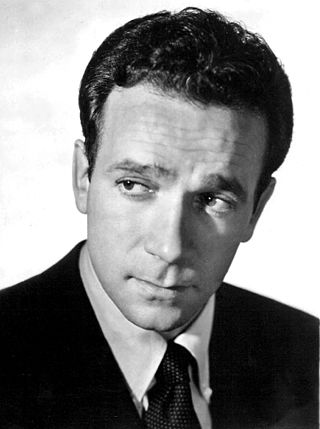
Dane Clark was an American character actor who was known for playing, as he labeled himself, "Joe Average."

The House Across the Lake is a 1954 British film noir crime film directed by Ken Hughes and starring Alex Nicol, Hillary Brooke, Sid James and Susan Stephen. t was produced as a second feature by Hammer Films. It was released in the United States by Lippert Pictures.

Spaceways is a 1953 science fiction drama film directed by Terence Fisher and starring Howard Duff, Eva Bartok and Alan Wheatley. It was produced by Michael Carreras for Hammer Film Productions Ltd. and Lippert Productions Inc., with Robert L. Lippert as uncredited co-producer. The screenplay was written by Paul Tabori and Richard Landau, based on a radio play by Charles Eric Maine. The film was distributed in the UK by Exclusive Films Ltd. and in the United States by Lippert Pictures.

A Stranger Came Home is a 1954 British film noir directed by Terence Fisher and starring Paulette Goddard, William Sylvester and Patrick Holt. It is based on the 1946 novel Stranger at Home, credited to actor George Sanders but ghostwritten by Leigh Brackett. The film was released in the United States by Lippert Pictures.
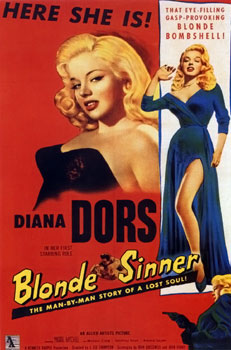
Yield to the Night is a 1956 British crime drama film directed by J. Lee Thompson and starring Diana Dors. The film is based on the 1954 novel of the same name by Joan Henry. The storyline bears a superficial and coincidental resemblance to the Ruth Ellis case, which had occurred the previous year but subsequent to the release of Henry's novel. The film received much positive critical attention, particularly for the unexpectedly skilled acting of Dors, who had previously been cast solely as a British version of the typical "blonde bombshell". The movie was nominated for the Palme d'Or at the 1956 Cannes Film Festival.
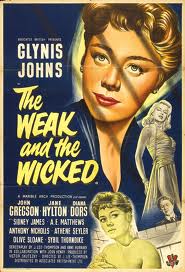
The Weak and the Wicked is a 1954 British drama film directed by J. Lee Thompson based on the autobiographical novel Who Lie in Gaol by his wife, Joan Henry, starring Glynis Johns and Diana Dors.

The Runaway Bus is a 1954 British comedy film produced, written and directed by Val Guest. It stars Frankie Howerd, Margaret Rutherford and Petula Clark and an ensemble cast of character actors in a story about a bus caught in fog while a gang of crooks tries to carry off a heist. The film was shot at Southall Studios in London with sets designed by the art director Wilfred Arnold. It was the film debut of Belinda Lee. The film is referenced in an episode of Frankie Howerd's 1970s radio series.

The Last Page, released in the United States as Man Bait, is a 1952 British film noir directed by Terence Fisher, starring George Brent, Marguerite Chapman and Diana Dors. The film was also known as Murder in Safety and Blonde Blackmail.
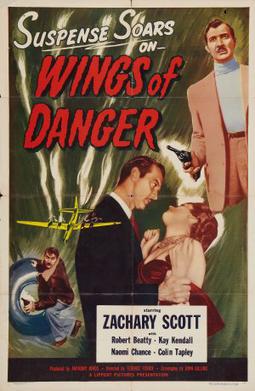
Wings of Danger is a 1952 British second feature crime film directed by Terence Fisher and starring Zachary Scott, Robert Beatty and Kay Kendall. The screenplay, based on the 1951 novel Dead on Course by Trevor Dudley Smith and Packham Webb, concerns a pilot who is suspected of smuggling. It was released in the United States under its working title of Dead on Course.

Home to Danger is a 1951 British second feature film noir crime film directed by Terence Fisher starring Guy Rolfe, Rona Anderson and Stanley Baker.

Mantrap, released in the United States as Man in Hiding, is a 1953 British second feature whodunit directed by Terence Fisher, starring Paul Henreid and Lois Maxwell.
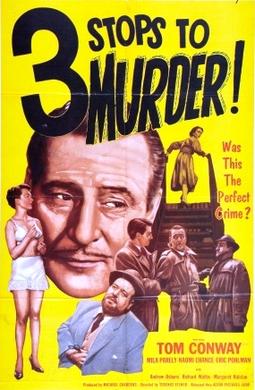
Blood Orange is a 1953 British crime film directed by Terence Fisher and starring Tom Conway and Mila Parély. It was released in the United States as Three Stops to Murder. A private eye investigating a jewel robbery at a London fashion house finds himself involved in a murder mystery.
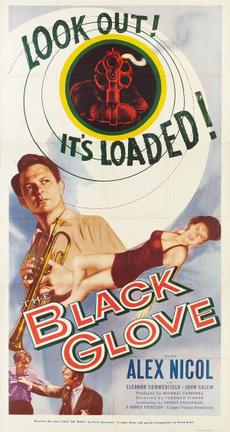
Face the Music is a 1954 British crime drama film directed by Terence Fisher, and starring Alex Nicol, Eleanor Summerfield and Paul Carpenter. It was released in the United States by Lippert Pictures.

Mask of Dust is a 1954 British second feature motor racing drama film directed by Terence Fisher and starring Richard Conte, Mari Aldon and Peter Illing. It was based on the 1953 novel The Last Race by Jon Manchip White. It was released in the United States by Lippert Pictures as A Race for Life.

The Last Man to Hang? is a 1956 crime film directed by Terence Fisher and starring Tom Conway and Elizabeth Sellars. It was produced by John Gossage for Act Films Ltd.

River Beat is a 1954 British second feature noir crime film directed by Guy Green and starring John Bentley, Phyllis Kirk and Leonard White. It was distributed in the United States by Lippert Pictures.
Five Days is a 1954 British film noir directed by Montgomery Tully starring Dane Clark, Paul Carpenter and Thea Gregory. It was produced by Hammer Film Productions and shot at Bray Studios with sets designed by the art director J. Elder Wills. Two comedians appear in pre-fame roles, Charles Hawtrey stars in a silent role as the assistant holding the jar and Warren Mitchell appears as a laughing man in a bar. It was made as a second feature for release on a double bill. It was released in the United States by Lippert Pictures as Paid to Kill.

Meet Mr. Callaghan is a 1954 British crime drama film directed by Charles Saunders and starring Derrick De Marney. Based on the 1938 novel The Urgent Hangman by Peter Cheyney, which Cheyney had then turned into a play.


















